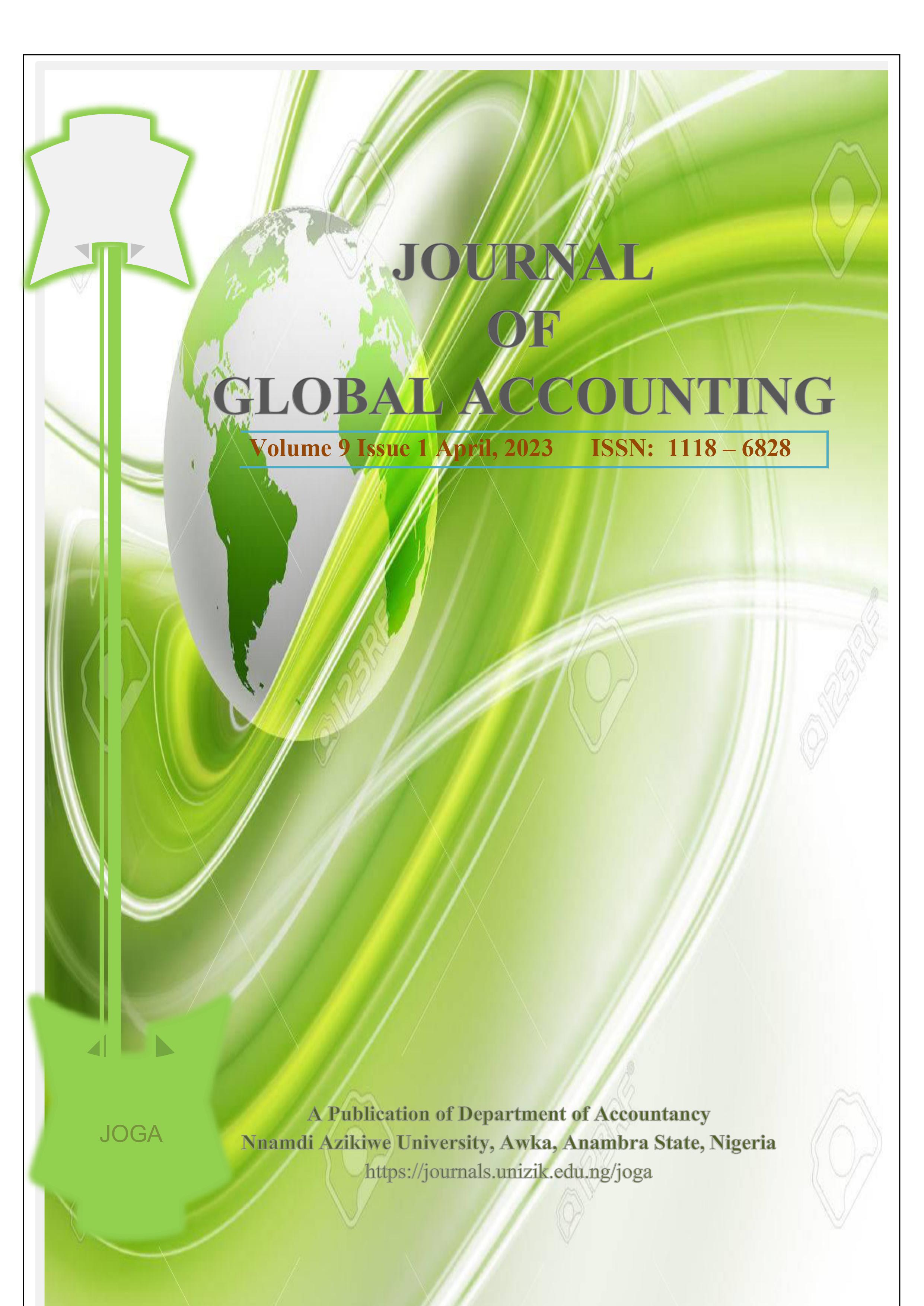CAPITAL STRUCTURE AND COST OF CAPITAL OF MULTINATIONAL FAST GROWING CONSUMER GOODS COMPANIES IN NIGERIA
Keywords:
capital structure, multinational, FMCGs, WACCAbstract
This study examined the capital structure and cost of capital of multinational fast-moving consumer goods (FMCGs) companies in Nigeria. The six multinational fast-moving consumer goods (FMCGs) companies listed on the Nigerian Stock Exchange for a period of 10 years (from 2011-2020) was selected. Secondary method of data collection was adopted; data was sourced from the audited financial statements of the companies. This study applied the ex post facto research design. The study was anchored on agency theory and pecking order theory and data was analyzed using ordinary least square regression and descriptive statistics. The results showed that total debt to total asset ratio and long term debt to total assets ratio has a downward negative effect on the weighted average cost of capital (WACC), total debt to capital employed ratio has a positive significant effect on WACC and long term debt to shareholders’ equity ratio has a positive insignificant effect on the WACC of the multinational FMCGs. The study concludes that the mix of equity capital and debt capital in the capital structure could have both positive and negative effect depending on the nature and source of debt capital and the financial leverage of the multinational FMCGs and recommends that the companies should strive towards the alignment of interests between shareholders and agents to reduce agency costs. The companies should also pursue an optimal capital structure by concentrating on capital types that have a lesser impact on the cost of capital.
Downloads
Published
Issue
Section
License
Copyright (c) 2023 JOGAArticles submitted to JOGA should not have been published or are currently under review by another Journal. Kindly see the guide for the preparation of the manuscript for details. Successful submission of articles by author(s) for publication clearly implies that the work is not an infringement of any existing copyright warranty as JOGA reserves the right to be indemnified by the author(s) where any breach of such warranty is proven. For ease of dissemination and to ensure proper policing of use, papers and contributions become the legal copyright of JOGA once published unless otherwise agreed.
Permission clearance should be obtained by the author(s) where applicable for the use of any content of interest not originally created by them. This must be done before the submission of the article to JOGA. Failure to do so may lead to a lengthy delay in publication, as JOGA is unable to publish any article which has permissions pending. Thus, the rights JOGA requires are:
- Non-exclusive right to reproduce the material in the article or book chapters.
- Print and electronic rights.
- To use the material for the life of the work (for instance, there should be no time restrictions on the re-use of material).
Where tables, figures or excerpts of more than 250 words are reproduced from another source, it is expected that:
- Author(s) should obtain the necessary written permission in advance from any third-party owner of the copyright for the use in print and electronic formats of any of their text, illustrations, graphics, or other material in their manuscript. Permission must also be cleared for any minor adaptations of any work not originally created by the author(s). The author (s) should not assume that any content freely available on the web is free to use.
- Where the author adapts a significant number of any material, the author(s) must inform the copyright holder of the original work.
- Author obtains any proof of consent statements
- The author must acknowledge figure(s) and content adopted or adapted in work utilizing source(s) and further capture them in the list of references.

